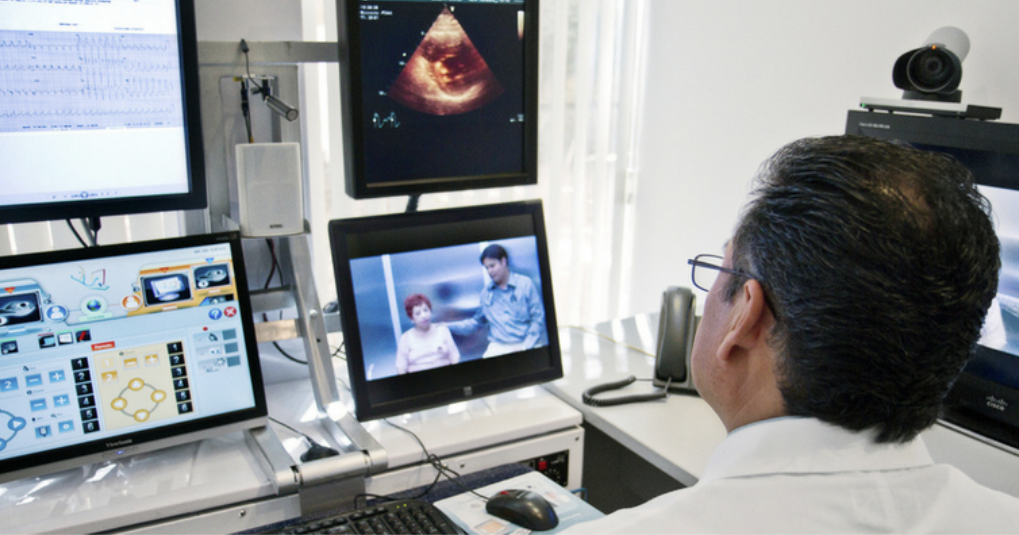Bhubaneswar : As the State Government has decided to activate the Telemedicine Centres at 41 health care institutions across Odisha to provide distant medical care during COVID-19, which has raised a big challenge to the accessibility of patients to hospital for General Health care, a Standard Operating Procedure (SOP) for Telemedicine platform was issued on Tuesday.
The standard operational procedures will be as follows.
I. Timing:
a. Telemedicine service in three old Medical College Hospitals (SCB MCH, Cuttack, MKCG MCH, Berhampur and VIMSAR, Burla), Acharya Harihar Post Graduate Institute of Cancer and SVPPGIP, Cuttack will be available round the clock and staff arrangement will be made accordingly.
b. In the 4 new Medical College and Hospitals (Balasore, Baripada, Bolangir and Koraput), all DHHs, Capital Hospital and RGH, Rourkela, the service will be available from 8 AM to 5 PM.
II. Control Room:
The control room in all Telemedicne Centres will run preferably in existing Telemedicine Centres using its computer and peripherals, internet system as well as furniture. The Telemedicine Technician already working there will provide technical assistance to the Call Responders. But if the CDM & PHO finds another suitable room adjacent to the existing Telemedince Centre and can arrange system for that, it can run separately but with technical assistance of the Telemedicine Technician.
III.
a. The Call Attending Person will be a Male Nurse/Pharmacist/Health Worker (M/F)/Mutli Purpose Health Supervisor (M/F) or a Female Nurse as per availability, that is to be decided by the Dean & Principal and the Superintendents of Medial College & Hospitals jointly or the DMO-cum-Superintendent of DHH/RGH/Capital Hospital. The list of such persons assigned with duty will be fixed and displayed at the beginning of the week in the notice board. Any change in the schedule should be done with judicious alternative arrangement and should be reflected much ahead to avoid dislocation.
b. There shall be at least two GDMOs and one Specialist/consultant from each stream, on call, during a specific time. The concerned local authority can make suitable changes if sufficient numbers of doctors are not available. A duty chart of concerned GDMO/Specialist/Consultant with contact number (Mobile) will be displayed in the Telemedicine Centre, OPD and office Chamber of the DMO-cum-Superintendent. The concerned doctors will remain in readiness to attend call. If sufficient number of doctors are available, then one doctor may also be deployed to the Telemedicine Centre exclusively, to attend the call immediately.
IV. Flow Chart for Call addressing:
V. Other key points for addressing call:
👉🏻The Call Respondent should keep a record of Caller’s details (Name, Guardian’s Name (in minor patients) Age, Sex, address etc) in the Register provided.
👉🏻If the Doctor/Specialist is not available the call should be recorded both digitally and manually with name, age, sex, detail address, contact number and chief complaints. The Call Respondent will have the responsibility to connect between the Caller and Doctor within shortest possible time.
👉🏻The Doctor will identify himself with his specialization if any, to the Caller.
Consent: if caller is the patient himself, consent is self implied. If caller is the relative or another Health Care provider (when patient is not in condition to give consent) or Guardian (when patient is a minor), consent through audio/video message that “Yes, I agree for Telemedicine consultation” or in any simpler but clearly understood format should be obtained and recorded.
👉🏻Complaints of the patient should be addressed after listening to them carefully.
👉🏻All privacy of the patient should be safeguarded.
👉🏻Queries on previous treatment/investigation can be made.
👉🏻If full advice on critical situation can’t be given, first aid, life saving measures, suitable advice for shifting to appropriate Health Care facility should be given.
👉🏻If the doctor feels sincerely that in person examination is necessary, the caller should be advised accordingly.
Any vague call/absurd questions, etc. should be politely objected/rejected.
👉🏻Prescription should be in prescribed format given by Government of India, bear the signature of the Doctor (if possible) and should be transmitted to Call Attendant digitally (e-mail/WhatsApp). The Call Attendant shall issue its scanned/digital copy to Caller with a copy to his nearest NIRAMAYA counter. The Caller can collect medicine from his nearest NIRAMAYA counter and the Pharmacist should keep the scanned/digital copy for record with a mention that the prescription was complied, so that, duplication will be avoided.
VI. Drugs to be Prescribed :
a. List O: consists of drugs which are safe and can be prescribed by any mode. Ex — Paracetamol, ORS, Cough Logenges, antiseptic ointments/lotions for local application etc.
b. List A: Consists of drugs which are relatively safe and not likely to cause addiction like antacids, anti-allergic, common anti-diarhhoea drugs, Vitamins, Iron, Folic acids etc. Of course, this should better be prescribed after a video conferencing.
c. List B: Consists of Medicines which are prescribed on follow up consultation / or continuation of drugs prescribed during in-person consultation or as a follow up consultation.
d. Prohibited List: Includes drugs which can’t be prescribed like narcotics, Psychotropics, Schedule X drugs.
VII. Logistics to be Kept in Control Room :
• Register
• Mobile Phone ( to be supplied)
• Computer and peripherals ( being used in Telemedicine )
• Minimal furniture

